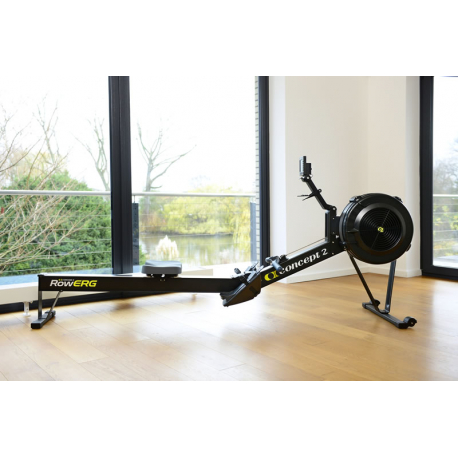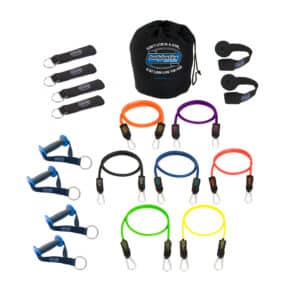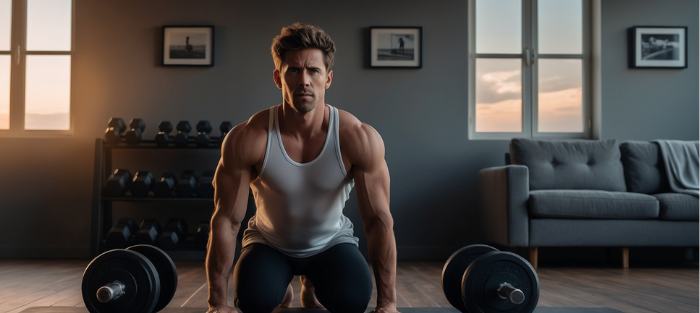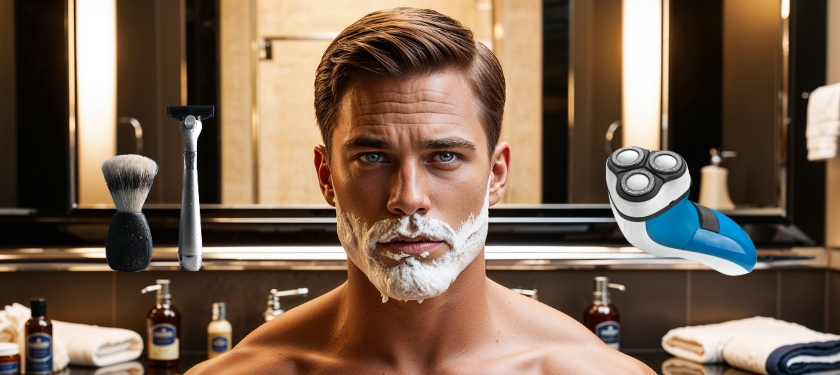Choosing the Right Space
Selecting the ideal location for your home gym is crucial. The right space will ensure you can exercise comfortably and safely. Here are some key considerations:
Space Requirements
- Room Size: Assess the available space in your home. A dedicated room, such as a spare bedroom or basement, is ideal. If space is limited, consider a section of your living room or garage. Ensure there is enough room for movement and equipment.
- Ventilation: Proper airflow is essential for keeping the environment fresh and reducing moisture buildup. Choose a room with windows or install a good ventilation system.
- Lighting: Natural light boosts mood and energy levels. If natural light is scarce, invest in bright, energy-efficient lighting to create an inviting atmosphere.
- Flooring: Opt for durable, non-slip flooring that can withstand the impact of heavy equipment and intense workouts. Rubber mats, foam tiles, or sturdy carpet are excellent choices.
Noise Considerations
- Soundproofing: To minimize noise, especially in shared living spaces, consider soundproofing options like rubber flooring, foam panels, or thick rugs.
Essential Equipment for a Home Gym
The equipment you choose will depend on your fitness goals, available space, and budget. Here’s a comprehensive list of essential equipment for a versatile home gym setup:
Cardio Equipment
Cardio workouts are essential for maintaining cardiovascular health, burning calories, and improving overall fitness. Here are some top notch choices for cardio equipment (we are aiming quality here, you can definitely find cheaper prices and make a gym setup that fits in your budget):
- Treadmill: Treadmills are a staple in any home gym. They offer the convenience of walking, jogging, or running regardless of weather conditions. Advanced models come with features like adjustable inclines, heart rate monitors, and pre-programmed workouts. For instance, the NordicTrack Commercial 1750 provides interactive personal training through iFit, making your cardio sessions more engaging and effective.

- Stationary Bike: Stationary bikes provide a low-impact cardio workout that’s easy on the joints. They come in various types, including upright, recumbent, and indoor cycling bikes. The Peloton Bike is a popular choice due to its live and on-demand classes that bring the energy of a spin studio to your home.

- Rowing Machine: Rowing machines offer a full-body workout, engaging multiple muscle groups while improving cardiovascular fitness. The Concept2 Model D is highly regarded for its smooth operation and reliable performance.

- Jump Rope: Jump ropes are an affordable and effective cardio tool that can be easily stored when not in use. They’re perfect for high-intensity interval training (HIIT) and improving coordination. The Crossrope Get Lean Set offers weighted ropes for added resistance and a more challenging workout.

Strength Training Equipment
Strength training is crucial for building muscle, increasing metabolism, and improving overall physical health. Here are some essential strength training tools:
- Dumbbells: Dumbbells are versatile and can be used for a wide range of exercises, targeting all major muscle groups. Adjustable dumbbells like the Bowflex SelectTech 552 save space and allow for easy weight changes.

- Kettlebells: Kettlebells are excellent for functional strength training, including swings, lifts, and squats. They help improve strength, endurance, and balance. A set of kettlebells ranging from light to heavy weights will accommodate various exercises and fitness levels.
- Resistance Bands: Resistance bands are versatile and space-saving. They can be used for strength training, stretching, and rehabilitation exercises. The Bodylastics Resistance Bands Set includes multiple resistance levels and attachments for a full-body workout.

- Barbell and Weight Plates: A barbell set with weight plates is necessary for compound exercises like squats, deadlifts, and bench presses. The Rogue Ohio Bar is a high-quality barbell that’s durable and versatile. Ensure you have a variety of weight plates to adjust the resistance as needed.

- Adjustable Bench: An adjustable bench is useful for a range of exercises, from bench presses to step-ups. The Rep Fitness Adjustable Bench offers multiple incline positions and sturdy construction for various workouts.
Functional Training Equipment
Functional training improves your overall strength and stability, enhancing everyday movements and athletic performance. Here are some key pieces of equipment:
- Yoga Mat: A yoga mat is essential for floor exercises, stretching, and yoga. The Manduka Pro Yoga Mat offers excellent cushioning and durability for all types of workouts.
- Stability Ball: Stability balls are great for core exercises, balance training, and flexibility. The Trideer Exercise Ball is anti-burst and comes in various sizes to suit your needs.
- Pull-Up Bar: A pull-up bar is useful for upper body workouts and can be easily installed in a doorway. The Iron Gym Pull-Up Bar is a versatile option that allows for multiple grip positions and easy installation.

Designing the Layout
A well-planned layout ensures your home gym is functional and enjoyable to use.
Zoning Your Gym
- Cardio Zone: Allocate space for your treadmill, stationary bike, or rowing machine. Ensure there’s enough room for safe and unrestricted movement.
- Strength Training Zone: Arrange your dumbbells, kettlebells, and weight bench in one area, providing sufficient space for lifting and other strength exercises.
- Functional Training Zone: Dedicate a spot for your yoga mat, stability ball, and pull-up bar. This area should be free from clutter to allow for a full range of motion during exercises.
Accessibility and Safety
- Accessibility: Make sure all equipment is easily accessible and there is enough room to move between zones. Avoid placing equipment too close to walls or other obstacles.
- Safety: Ensure that heavy equipment like treadmills and weight racks are placed against walls for stability. Keep the workout area free from clutter to prevent accidents.
Budget-Friendly Home Gym Setup
Creating a home gym on a budget is possible with some strategic planning. Here are tips to set up an affordable home gym:
Budget Tips
- Start Small: Begin with essential equipment such as dumbbells, resistance bands, and a yoga mat. Gradually add more equipment as needed.
- Second-Hand Equipment: Check online marketplaces like Craigslist, Facebook Marketplace, or local classifieds for gently used equipment at a fraction of the cost.
- DIY Solutions: Get creative with DIY equipment. For example, use a sandbag as a weight or furniture sliders for bodyweight exercises.
Examples:
- DIY Sandbag: Fill a sturdy duffel bag with sand or gravel and secure it tightly. You now have a versatile weight for various exercises like squats, lunges, and deadlifts.
- Furniture Sliders: Use sliders for core workouts and bodyweight exercises. They’re great for mountain climbers, sliding lunges, and pike movements.
Integrating Technology
Technology can enhance your home workout experience by providing guidance, tracking progress, and adding variety to your routines. Here are some tech integrations to consider:
Tech Gadgets
- Fitness Apps: Utilize fitness apps like MyFitnessPal, Nike Training Club, or Fitbod to track workouts, monitor progress, and access workout programs. These apps often offer personalized plans, video tutorials, and community support.
- Smart Equipment: Consider investing in smart equipment like the Peloton bike or Mirror for interactive workouts that offer real-time feedback and motivation. For example, the Mirror provides live and on-demand fitness classes in various disciplines, turning your home into a fitness studio.
- Wearable Tech: Use fitness trackers or smartwatches to monitor heart rate, calories burned, and other vital stats. Brands like Fitbit, Apple Watch, and Garmin offer comprehensive fitness tracking features, including sleep tracking, GPS, and heart rate monitoring.
Creating a Motivating Environment
A motivating environment can significantly impact your workout consistency and enjoyment. Here are some tips to create an inspiring home gym atmosphere:
Motivational Tips
- Decorate: Add motivational posters, artwork, or a chalkboard wall to write down your goals and achievements. Personalize the space to reflect your style and preferences. For example, create a vision board with your fitness goals, inspirational quotes, and photos that motivate you.
- Music: Set up a sound system or use Bluetooth speakers to play your favorite workout music. Music can boost your energy and keep you motivated during workouts. Create playlists with high-energy tracks for cardio sessions and calming tunes for yoga and stretching.
- Lighting: Use bright, energizing lighting to create an uplifting atmosphere. Consider LED lights that mimic natural daylight for an extra boost. Adjustable lighting can help set the mood for different types of workouts, from intense cardio to relaxing yoga sessions.
Maintenance and Safety
Maintaining your home gym equipment and ensuring safety is crucial for a long-lasting and effective workout space.
Maintenance Tips
- Regular Cleaning: Clean your equipment regularly to prevent dust buildup and ensure hygiene. Wipe down machines, mats, and weights after each use with disinfectant wipes or a mild cleaning solution. This prevents the buildup of sweat and bacteria, keeping your gym sanitary and extending the life of your equipment.
- Equipment Checks: Perform regular checks to ensure all equipment is in good working condition. Tighten loose bolts, lubricate moving parts, and replace worn-out components as needed. For example, inspect your treadmill belt for wear and ensure that resistance bands are free of tears.
- Safety Measures: Keep the workout area free from clutter to prevent accidents. Ensure that all equipment is securely positioned and that you have a clear path for emergency exits. Install mirrors to monitor your form during exercises and reduce the risk of injury.
Advanced Home Gym Considerations
As you become more committed to your fitness journey, you might want to invest in more advanced equipment and setup options.
Advanced Equipment
- Cable Machine: Provides a versatile range of motion for various strength training exercises. A cable machine can replace multiple pieces of equipment, offering exercises like lat pulldowns, tricep pushdowns, and cable rows.
- Smith Machine: Offers stability for weight lifting exercises, reducing the risk of injury. It’s ideal for squats, bench presses, and shoulder presses, especially for those who prefer lifting without a spotter.
- Power Rack: Essential for heavy lifting and advanced strength training exercises like squats and bench presses. A power rack with safety bars allows for heavy lifts without the need for a spotter, providing a safe environment for exercises like squats and deadlifts.
Customization
- Personal Training: Hire a personal trainer for virtual sessions or in-home visits to tailor workouts to your needs and goals. A trainer can provide personalized programs, monitor your form, and adjust your workouts as you progress.
- Specialized Zones: Create specialized zones for different types of workouts, such as a dedicated area for HIIT (High-Intensity Interval Training) or Pilates. This can help keep your workouts organized and prevent distractions.
- Recovery Area: Set up a space for post-workout recovery, including foam rollers, massage tools, and a comfortable seating area. Incorporate elements like a stretching mat, a massage chair, or a small fridge for post-workout snacks and drinks.
Incorporating Outdoor Spaces
If you have access to outdoor space, consider incorporating it into your home gym setup.
Benefits of Outdoor Workouts
- Fresh Air: Exercising outdoors provides fresh air and a change of scenery, which can be refreshing and motivating.
- Natural Light: Sunlight boosts mood and energy levels, enhancing your workout experience.
- Versatility: Outdoor spaces can accommodate a wide range of activities, from running and cycling to yoga and bodyweight exercises.
Outdoor Equipment
- Weather-Resistant Equipment: Invest in durable, weather-resistant equipment like kettlebells, resistance bands, and jump ropes.
- Portable Equipment: Use portable equipment that can be easily moved between indoor and outdoor spaces, such as yoga mats and dumbbells.
Conclusion
Building a home gym is a valuable investment in your health and fitness. With the right space, equipment, and environment, you can create a workout haven that fits your lifestyle and goals. Whether you’re a beginner or a seasoned fitness enthusiast, this guide provides the foundation to help you stay fit without leaving your house.
By following these steps and incorporating the tips provided, you’ll be well on your way to achieving your fitness goals in the comfort of your own home. Remember, consistency is key, and a well-designed home gym can make it easier to stay on track.















